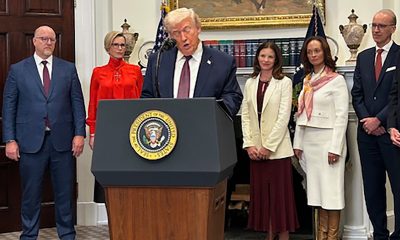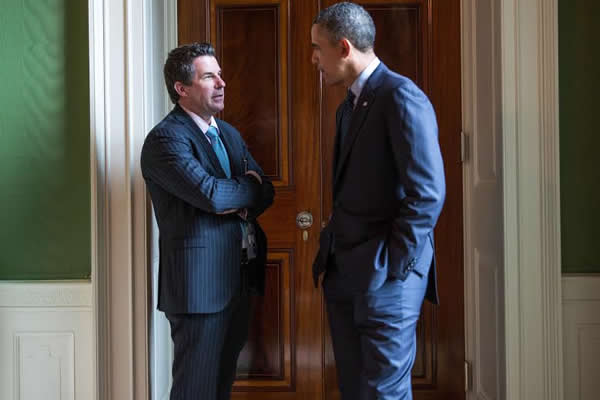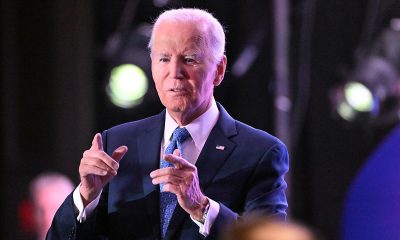National
Monkeypox being spread through sex, not brief skin-to-skin contact: experts
Health experts weigh declaring virus an STD
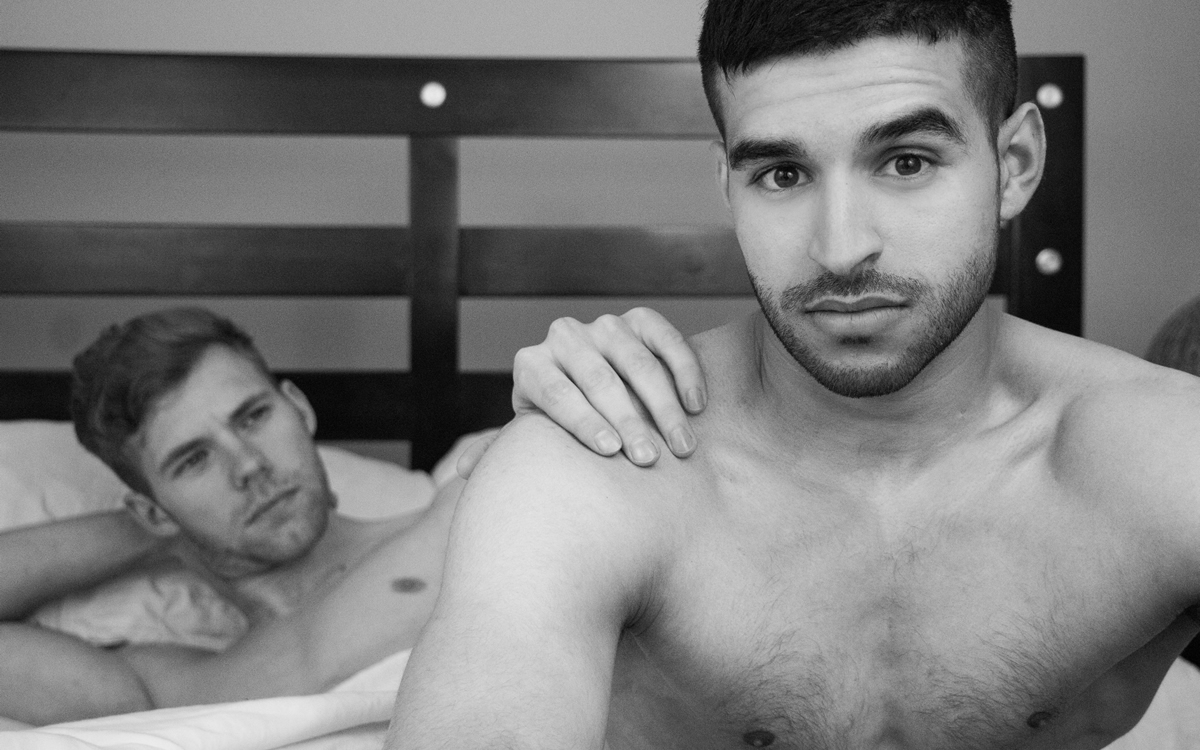
Amid fears monkeypox would spread at an increased rate at the end of summer as gay men gather in close quarters for dance parties and other celebrations, health experts are starting to emphasize that the current outbreak isn’t spreading through minimal skin-to-skin contact, such as brushing up against a fellow shirtless dance partner, but rather through sexual activity and overwhelmingly among men who have sex with men.
With reported cases of monkeypox in the United States this week reaching 15,505, according to data from the Centers for Disease Control, a number of health experts who spoke to the Blade talked about outright declaring monkeypox a sexually transmitted disease as part of this messaging — although they acknowledge such a label would have pros and cons.
Juan Carlos Loubriel, senior director of community health at the D.C.-based Whitman-Walker Health, was among the health experts making the distinction between the negligible risks of transmitting monkeypox through brief skin-to-skin contact as opposed to sexual activity.
“I’ll say that we need to provide the real facts to our community that indicates right now that the majority of the cases are sexually transmitted, right?” Loubriel said. “So transmission is not occurring by casual touch, right? That’s what we know as of today … So the majority of the cases [are] by prolonged skin-to-skin contact, and during sex there is a lot of skin-to-skin contact.”
As health experts at large are beginning to make a distinction in how the disease is transmitted, the Biden administration has also taken up messaging that downplays the risk of monkeypox transmission through minimal skin-to-skin contact.
Demetre Daskalakis, who is the face of the LGBTQ outreach for the Biden administration as deputy coordinator of the White House monkeypox task force, made colorful remarks Friday during a conference call with reporters downplaying the risk of contracting monkeypox through brief contact, quoting a senior policy adviser at the CDC who has studied LGBTQ health issues.
“I think I’m going to quote my friend Robbie Goldstein that sex involves friction, and friction seems to be how this happens,” Daskalakis said. “So, I think, that from the perspective of events, the real risk at an event is low. Of course, you have to gauge that risk based on what you’re doing, so if there’s a lot of clothes out dancing and friction, that could be a mechanism of transmission, but just brushing by someone, I’ve said this many times before, just brushing by someone is probably low or no risk.”
Asked by the Blade during the call about any consideration on declaring monkeypox a sexually transmitted disease, Daskalakis said it’s “really important that the decision around monkeypox and whether it’s designated happen thoughtfully from the perspective of other implications.”
“What’s really important from the perspective of our communication on the ground is that our harm reduction and safer sex guidance really does mention the importance of sexual transmission or the associated transmission of the virus, and also provides guidance necessary, like reminding people that condoms may have a role — not necessarily the full role — in preventing monkeypox, but also reminds folks that skin-to-skin contact in the context of sex can be really a part of how transmission occurs,” he said.
The messaging is consistent with new studies finding cases of monkeypox are overwhelmingly the result of sexual activity. According to a recent report by NBC News, an increasing amount of scientific evidence — such three studies published in peer-reviewed journals, as well as reports from national, regional, and global health authorities — has indicated “experts may have framed monkeypox’s typical transmission route precisely backward.”
“[A]n expanding cadre of experts has come to believe that sex between men itself — both anal as well as oral intercourse — is likely the main driver of global monkeypox transmission,” the NBC News report says. “The skin contact that comes with sex, these experts say, is probably much less of a risk factor.”
With evidence the monkeypox outbreak is overwhelmingly being transmitted through sexual activity and risks from skin-to-skin contact virtually non-existent, experts say discussion on whether or not to label the virus as a sexually transmitted disease are ongoing and controversial.
On one hand, designating monkeypox as a sexually transmitted disease would give the public a clearer idea about the way it’s being transmitted to allay concerns and enable the public to take appropriate precautions. On the other hand, as seen during the height of HIV/AIDS crisis, an emphasis on monkeypox being transmitted among men who have sex with men may have the effect of stigmatizing the community (and the sexual activity) as being responsible for the outbreak.
Loubriel said the issue of whether or not monkeypox should be messaged more as a sexually transmitted disease is “a very good question and also a very big debate around public health, even within the public health sector.”
“The only reason we cannot say it is just sexually transmitted is because we know as a fact that it can be spread by other various avenues like touching clothing, bedding with an infected person or towels being used by someone with monkeypox, potentially contact with respiratory secretions,” Loubriel added. “So that is why it’s probably not been named as a sexually transmitted infection.”
Joseph Lee, a professor of health education at East Carolina University who studies health inequities among LGBTQ people, said there’s “real tension” in finding the right messaging, which he said would strike a balance between being factual while not being stigmatic of the marginalized community affected by monkeypox.
“We see when we have messaging that goes to the general public…that messaging about how a particular group is doing worse triggers negative stereotypes and makes people feel less at risk than they are,” Lee said. “And really importantly, it makes the group at the worst end of that problem feel sometimes like they’re feeling fatalistic or they can’t do anything to protect themselves. You almost feel like you have to give up and you’re just going to get it anyway because the messaging is so clear, how much it’s impacting your community.”
Lee, however, praised communications on monkeypox from the Centers for Disease Control & Prevention, saying the agency has “very useful guidance about promoting equity in monkeypox communication that I actually really like.”
Key points in the guidance, Lee said, is messaging that monkeypox can affect anyone, while going through some of the ways the virus is being transmitted and ways the public can protect itself. The guidance, Lee said, follows the right strategy of articulating a message to the general public, then adding more specific messages about protection against the disease and risk to the communities most vulnerable.
“That’s sort of their big picture strategy that I think is actually the right strategy,” Lee concluded. “How well everyone’s implementing it across the country in our messy, somewhat broken public health system is another question.”
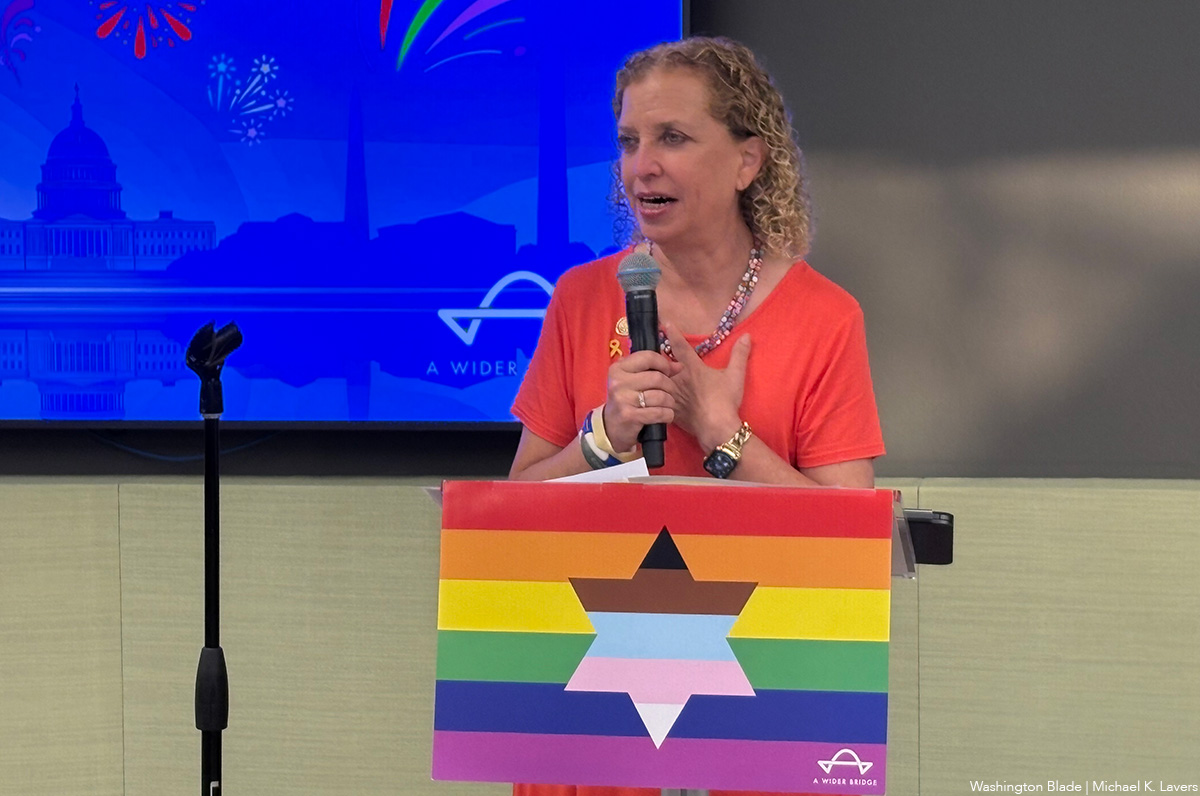
A Wider Bridge on Friday announced it will shut down at the end of the month.
The group that “mobilizes the LGBTQ community to fight antisemitism and support Israel and its LGBTQ community” in a letter to supporters said financial challenges prompted the decision.
“After 15 years of building bridges between LGBTQ communities in North America and Israel, A Wider Bridge has made the difficult decision to wind down operations as of Dec. 31, 2025,” it reads.
“This decision comes after challenging financial realities despite our best efforts to secure sustainable funding. We deeply appreciate our supporters and partners who made this work possible.”
Arthur Slepian founded A Wider Bridge in 2010.
The organization in 2016 organized a reception at the National LGBTQ Task Force’s Creating Change Conference in Chicago that was to have featured to Israeli activists. More than 200 people who protested against A Wider Bridge forced the event’s cancellation.
A Wider Bridge in 2024 urged the Capital Pride Alliance and other Pride organizers to ensure Jewish people can safely participate in their events in response to an increase in antisemitic attacks after Hamas militants attacked Israel on Oct. 7, 2023.
The Jewish Telegraphic Agency reported authorities in Vermont late last year charged Ethan Felson, who was A Wider Bridge’s then-executive director, with lewd and lascivious conduct after alleged sexual misconduct against a museum employee. Rabbi Denise Eger succeeded Felson as A Wider Bridge’s interim executive director.
A Wider Bridge in June honored U.S. Rep. Debbie Wasserman Schultz (D-Fla.) at its Pride event that took place at the Capital Jewish Museum in D.C. The event took place 15 days after a gunman killed two Israeli Embassy employees — Yaron Lischinsky and Sarah Milgrim — as they were leaving an event at the museum.
“Though we are winding down, this is not a time to back down. We recognize the deep importance of our mission and work amid attacks on Jewish people and LGBTQ people – and LGBTQ Jews at the intersection,” said A Wider Bridge in its letter. “Our board members remain committed to showing up in their individual capacities to represent queer Jews across diverse spaces — and we know our partners and supporters will continue to do the same.”
Editor’s note: Washington Blade International News Editor Michael K. Lavers traveled to Israel and Palestine with A Wider Bridge in 2016.
The White House
‘Trump Rx’ plan includes sharp cuts to HIV drug prices
President made announcement on Friday

President Donald Trump met with leaders from some of the world’s largest pharmaceutical companies at the White House on Friday to announce his new “Trump Rx” plan and outline efforts to reduce medication costs for Americans.
During the roughly 47-minute meeting in the Roosevelt Room, Trump detailed his administration’s efforts to cut prescription drug prices and make medications more affordable for U.S. patients.
“Starting next year, American drug prices will come down fast, furious, and will soon be among the lowest in the developed world,” Trump said during the meeting. “For decades, Americans have been forced to pay the highest prices in the world for prescription drugs by far … We will get the lowest price of anyone in the world.”
Trump signed an executive order in May directing his administration “to do everything in its power to slash prescription drug prices for Americans while getting other countries to pay more.”
“This represents the greatest victory for patient affordability in the history of American health care, by far, and every single American will benefit,” he added.
Several pharmaceutical executives stood behind the president during the announcement, including Sanofi CEO Paul Hudson, Novartis CEO Vas Narasimhan, Genentech CEO Ashley Magargee, Boehringer Ingelheim (USA) CEO Jean-Michel Boers, Gilead Sciences CEO Dan O’Day, Bristol Myers Squibb General Counsel Cari Gallman, GSK CEO Emma Walmsley, Merck CEO Robert Davis, and Amgen Executive Vice President Peter Griffith.
Also in attendance were Health and Human Services Secretary Robert F. Kennedy Jr., Commerce Secretary Howard Lutnick, Centers for Medicare and Medicaid Services Administrator Mehmet Oz, and Food and Drug Administration Commissioner Marty Makary.
Under the Trump Rx plan, the administration outlined a series of proposed drug price changes across multiple companies and therapeutic areas. Among them were reductions for Amgen’s cholesterol-lowering drug repatha from $573 to $239; Bristol Myers Squibb’s HIV medication reyataz from $1,449 to $217; Boehringer Ingelheim’s type 2 diabetes medication jentadueto from $525 to $55; Genentech’s flu medication xofluza from $168 to $50; and Gilead Sciences’ hepatitis C medication epclusa from $24,920 to $2,425.
Additional reductions included several GSK inhalers — such as the asthma inhaler advair diskus 500/50, from $265 to $89 — Merck’s diabetes medication januvia from $330 to $100, Novartis’ multiple sclerosis medication mayzent from $9,987 to $1,137, and Sanofi’s blood thinner plavix from $756 to $16. Sanofi insulin products would also be capped at $35 per month’s supply.
These prices, however, would only be available to patients who purchase medications directly through TrumpRx. According to the program’s website, TrumpRx “connects patients directly with the best prices, increasing transparency, and cutting out costly third-party markups.”
Kennedy spoke after Trump, thanking the president for efforts to lower pharmaceutical costs in the U.S., where evidence has shown that drug prices — including both brand-name and generic medications — are nearly 2.78 times higher than prices in comparable countries. According to the Pharmaceutical Research and Manufacturers of America, roughly half of every dollar spent on brand-name drugs goes to entities that play no role in their research, development, or manufacturing.
“This is affordability in action,” Kennedy said. “We are reversing that trend and making sure that Americans can afford to get the life-saving solutions.”
Gilead CEO Dan O’Day also spoke about how the restructuring of drug costs under TrumpRx, combined with emerging technologies, could help reduce HIV transmission — a virus that, if untreated, can progress to AIDS. The LGBTQ community remains disproportionately affected by HIV.
“Thank you, Mr. President — you and the administration,” O’Day said. “I think this objective of achieving the commitment to affordability and future innovation is extraordinary … We just recently launched a new medicine that’s only given twice a year to prevent HIV, and we’re working with Secretary Kennedy and his entire team, as well as the State Department, as a part of your strategy to support ending the epidemic during your term.
“I’ve never been more optimistic about the innovation that exists across these companies and the impact this could have on America’s health and economy,” he added.
Trump interjected, asking, “And that’s working well with HIV?”
“Yes,” O’Day replied.
“It’s a big event,” Trump said.
“It literally prevents HIV almost 100 percent given twice a year,” O’Day responded.
A similar anti-HIV medication is currently prescribed more than injectable form mentioned by O’Day. PrEP, is a medication regimen proven to significantly reduce HIV infection rates for people at high risk. Without insurance, brand-name Truvada can cost roughly $2,000 per month, while a generic version costs about $60 per month.
Even when medication prices are reduced, PrEP access carries additional costs, including clinic and laboratory fees, office visits, required HIV and sexually transmitted infection testing, adherence services and counseling, and outreach to potentially eligible patients and providers.
According to a 2022 study, the annual total cost per person for PrEP — including medication and required clinical and laboratory monitoring — is approximately $12,000 to $13,000 per year.
The TrumpRx federal platform website is now live at TrumpRx.gov, but the program is not slated to begin offering reduced drug prices until January.
The White House
EXCLUSIVE: Democracy Forward files FOIA lawsuit after HHS deadnames Rachel Levine
Trans former assistant health secretary’s name changed on official portrait

Democracy Forward, a national legal organization that works to advance democracy and social progress through litigation, policy and public education, and regulatory engagement, filed a lawsuit Friday in federal court seeking to compel the U.S. Department of Health and Human Services to release information related to the alteration of former Assistant Secretary for Health Adm. Rachel Levine’s official portrait caption.
The lawsuit comes in response to the slow pace of HHS’s handling of multiple Freedom of Information Act requests — requests that federal law requires agencies to respond to within 20 working days. While responses can take longer due to backlogs, high request volumes, or the need for extensive searches or consultations, Democracy Forward says HHS has failed to provide any substantive response.
Democracy Forward’s four unanswered FOIA requests, and the subsequent lawsuit against HHS, come days after someone in the Trump-Vance administration changed Levine’s official portrait in the Hubert H. Humphrey Building to display her deadname — the name she used before transitioning and has not used since 2011.
According to Democracy Forward, HHS “refused to release any records related to its morally wrong and offensive effort to alter former Assistant Secretary for Health Admiral Rachel Levine’s official portrait caption.” Levine was the highest-ranking openly transgender government official in U.S. history and served as assistant secretary for health and as an admiral in the U.S. Public Health Service Commissioned Corps from 2021 to 2025.
Democracy Forward President Skye Perryman spoke about the need to hold the Trump-Vance administration accountable for every official action, especially those that harm some of the most targeted Americans, including trans people.
“The question every American should be asking remains: what is the Trump-Vance administration hiding? For an administration that touts its anti-transgender animus and behavior so publicly, its stonewalling and silence when it comes to the people’s right to see public records about who was behind this decision is deafening,” Perryman said.
“The government’s obligation of transparency doesn’t disappear because the information sought relates to a trailblazing former federal official who is transgender. It’s not complicated — the public is entitled to know who is making decisions — especially decisions that seek to alter facts and reality, erase the identity of a person, and affect the nation’s commitment to civil rights and human dignity.”
“HHS’s refusal to respond to these lawful requests raises more serious concerns about transparency and accountability,” Perryman added. “The public has every right to demand answers — to know who is behind this hateful act — and we are going to court to get them.”
The lawsuit also raises questions about whether the alteration violated federal accuracy and privacy requirements governing Levine’s name, and whether the agency improperly classified the change as an “excepted activity” during a lapse in appropriations. By failing to make any determination or produce any records, Democracy Forward argues, HHS has violated its obligations under federal law.
The case, Democracy Forward Foundation v. U.S. Department of Health and Human Services, was filed in the U.S. District Court for the District of Columbia. The legal team includes Anisha Hindocha, Daniel McGrath, and Robin Thurston.
The Washington Blade reached out to HHS, but has not received any comment.
The lawsuit and four FOIA requests are below:
-

 Politics3 days ago
Politics3 days agoLGBTQ Democrats say they’re ready to fight to win in 2026
-

 District of Columbia3 days ago
District of Columbia3 days agoBrian Footer suspends campaign for Ward 1 D.C. Council seat
-

 Chile5 days ago
Chile5 days agoFar-right José Antonio Kast elected Chile’s next president
-

 Opinions3 days ago
Opinions3 days agoLighting candles in a time of exhaustion

